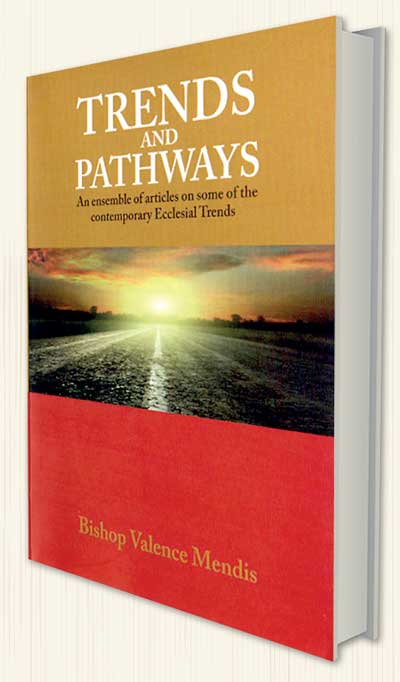Reply To:
Name - Reply Comment
Last Updated : 2024-04-20 10:20:00
 Copy of ‘Trends And Pathways’ written by Bishop Valance Mendis, gifted to me by a very special friend who also shares my views on philosophy as well as on Buddhism though a strong Christian, fired my imagination to read it over and over again.
Copy of ‘Trends And Pathways’ written by Bishop Valance Mendis, gifted to me by a very special friend who also shares my views on philosophy as well as on Buddhism though a strong Christian, fired my imagination to read it over and over again.
 be concerned about the protection of environment but he himself set an example by adhering to them. In Vanaropa sutta he said “They who plant orchards and gardens, who plant groves, who build bridges, who set up shades roadside with drinking water for the travellers who sink wells or build whom merit grows by day and by night. They are the people that are established in the Dhamma, that are endowed with morality and that are bound for the deva realms” Devata Samyutta : Samyutta Nikaya.
be concerned about the protection of environment but he himself set an example by adhering to them. In Vanaropa sutta he said “They who plant orchards and gardens, who plant groves, who build bridges, who set up shades roadside with drinking water for the travellers who sink wells or build whom merit grows by day and by night. They are the people that are established in the Dhamma, that are endowed with morality and that are bound for the deva realms” Devata Samyutta : Samyutta Nikaya.

Add comment
Comments will be edited (grammar, spelling and slang) and authorized at the discretion of Daily Mirror online. The website also has the right not to publish selected comments.
Reply To:
Name - Reply Comment
On March 26, a couple arriving from Thailand was arrested with 88 live animal
According to villagers from Naula-Moragolla out of 105 families 80 can afford
Is the situation in Sri Lanka so grim that locals harbour hope that they coul
A recent post on social media revealed that three purple-faced langurs near t